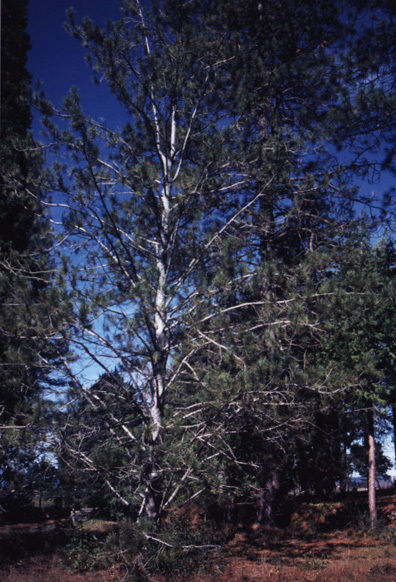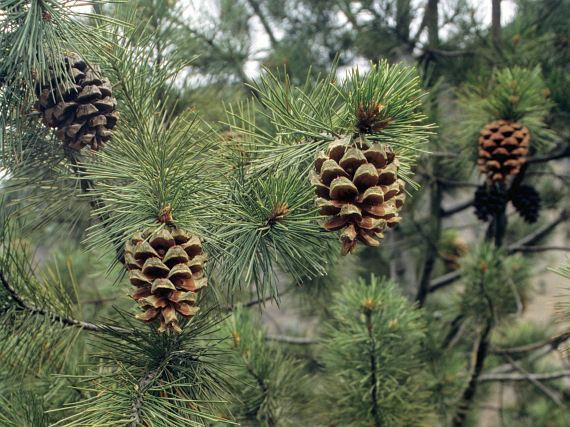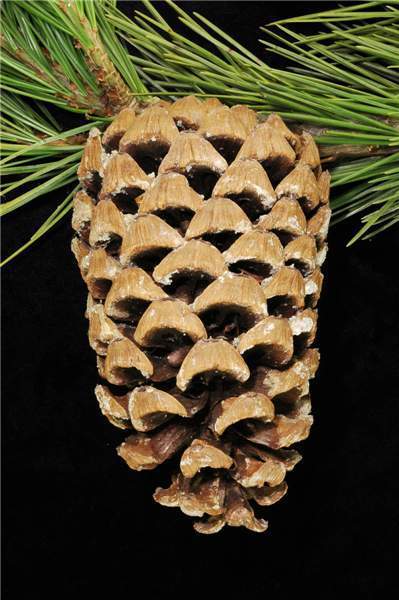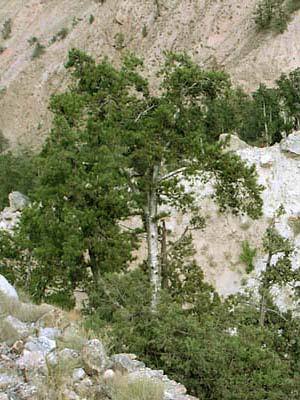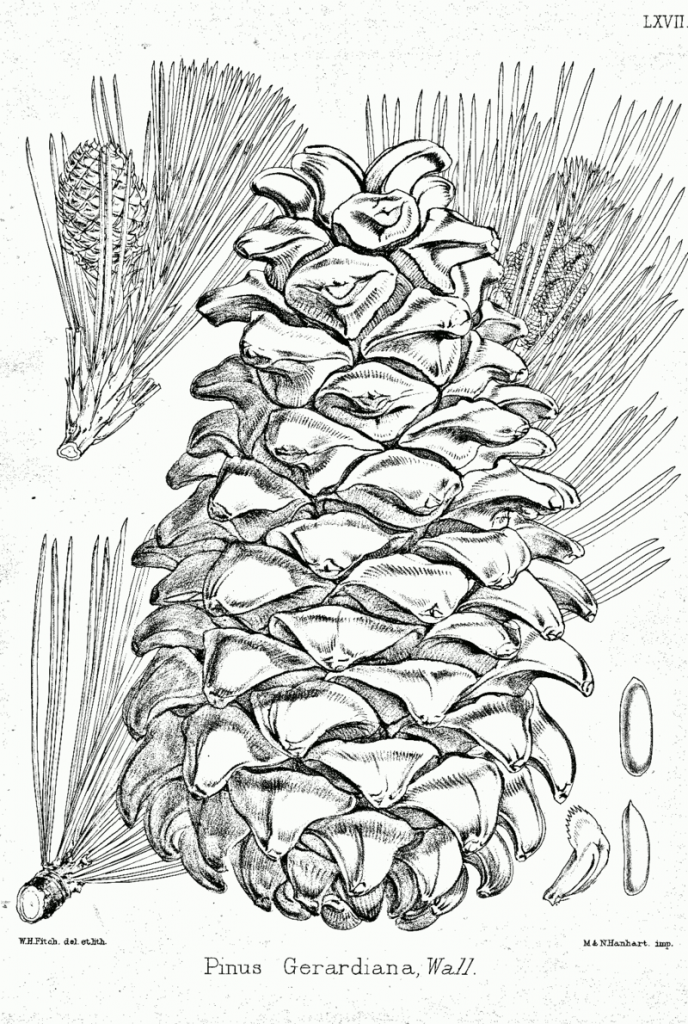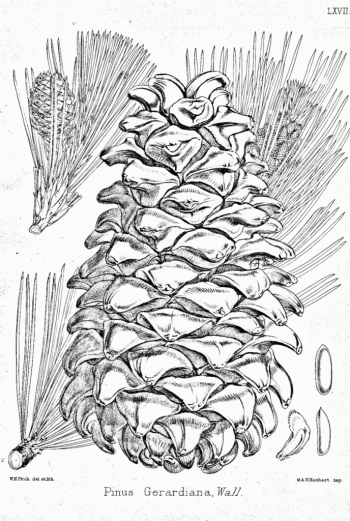
subgenus Strobus (Lemmon), section Quinquefoliae (Duhamel), subsection Gerardianae (Loudon).
Pinus gerardiana, as described in 1832 by Nathaniel Wallich (1786-1854) ex David Don (1799-1841) in Aylmer Bourke Lambert (1761-1842), is commonly known as chilgoza or Gerard pine, as well as چلغوزا پائن (a transliteration of "chilgoza pine") in the Urdu language. In Urdu, "chilgoza" means "pine nut." They are similar to Italian pignoli or pine nuts; the edible seeds are a food crop that are used in local cuisine.
The species name honors Captain Alexander Gerard (1792 - 1839), a surveyor with the Bengal Native Infantry who encountered this tree during explorations in the Koonawur district in the Himalayas in 1821.
Description. Chilgoza pine is an evergreen coniferous species of tree that grows to mature heights of 32 to 65 feet (10 - 20 m) with with a trunk up to 40 inches (1 m) wide, measured at breast height and a deep, wide and open crown, but narrower and shallower in dense forest.
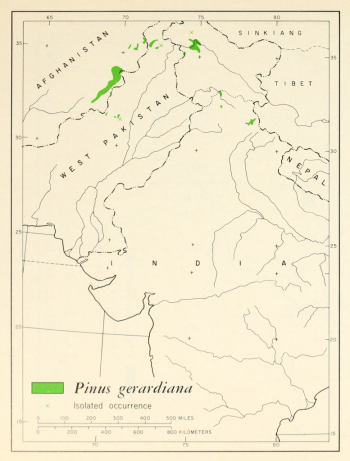
Distribution. This species is native to the Himalayan mountains - eastern Afghanistan, northern Pakistan, India - Jammu-Kashmir, Tibet. Mostly grows in valleys at elevations of 6,500 to 11,000 feet (2,000 - 3,350 m) above sea level, in the dry temperate forest of the inner ranges of the Himalaya, where the summer monsoon is weak and precipitation, mostly in the form of snow, rarely exceeds 40 inches (1,000 mm) per year.
This pine is hardy to USDA Zone 7, cold hardiness limit between 0° and 10°F (-17.7° and -12.2°C).
